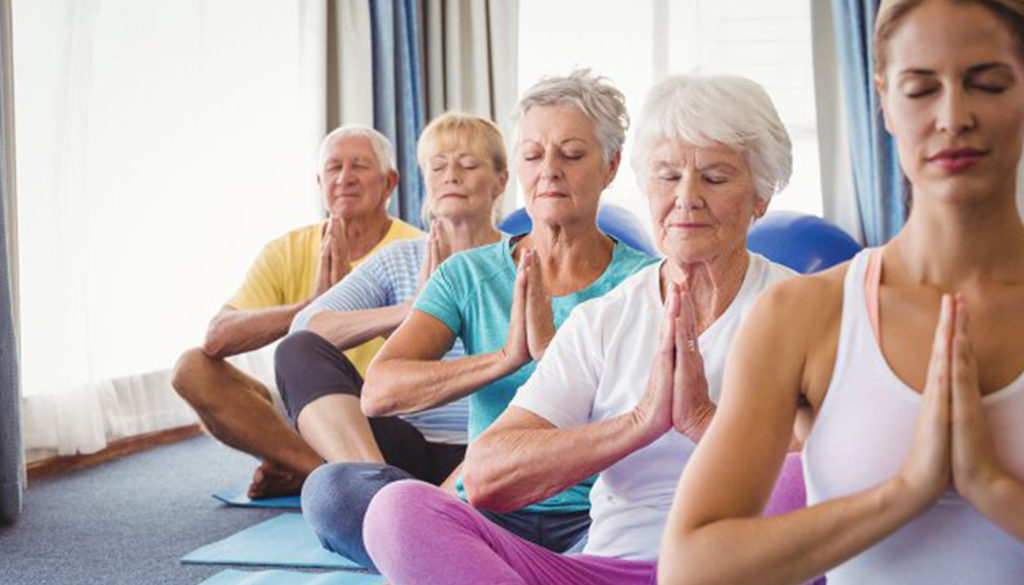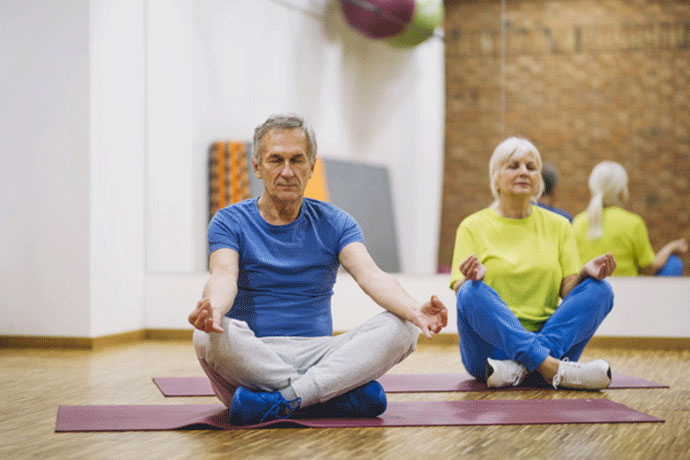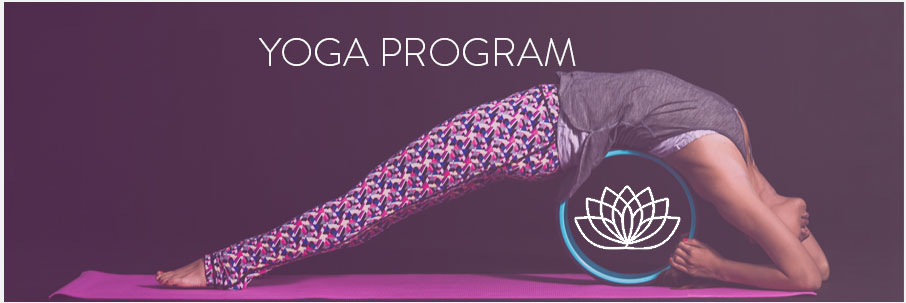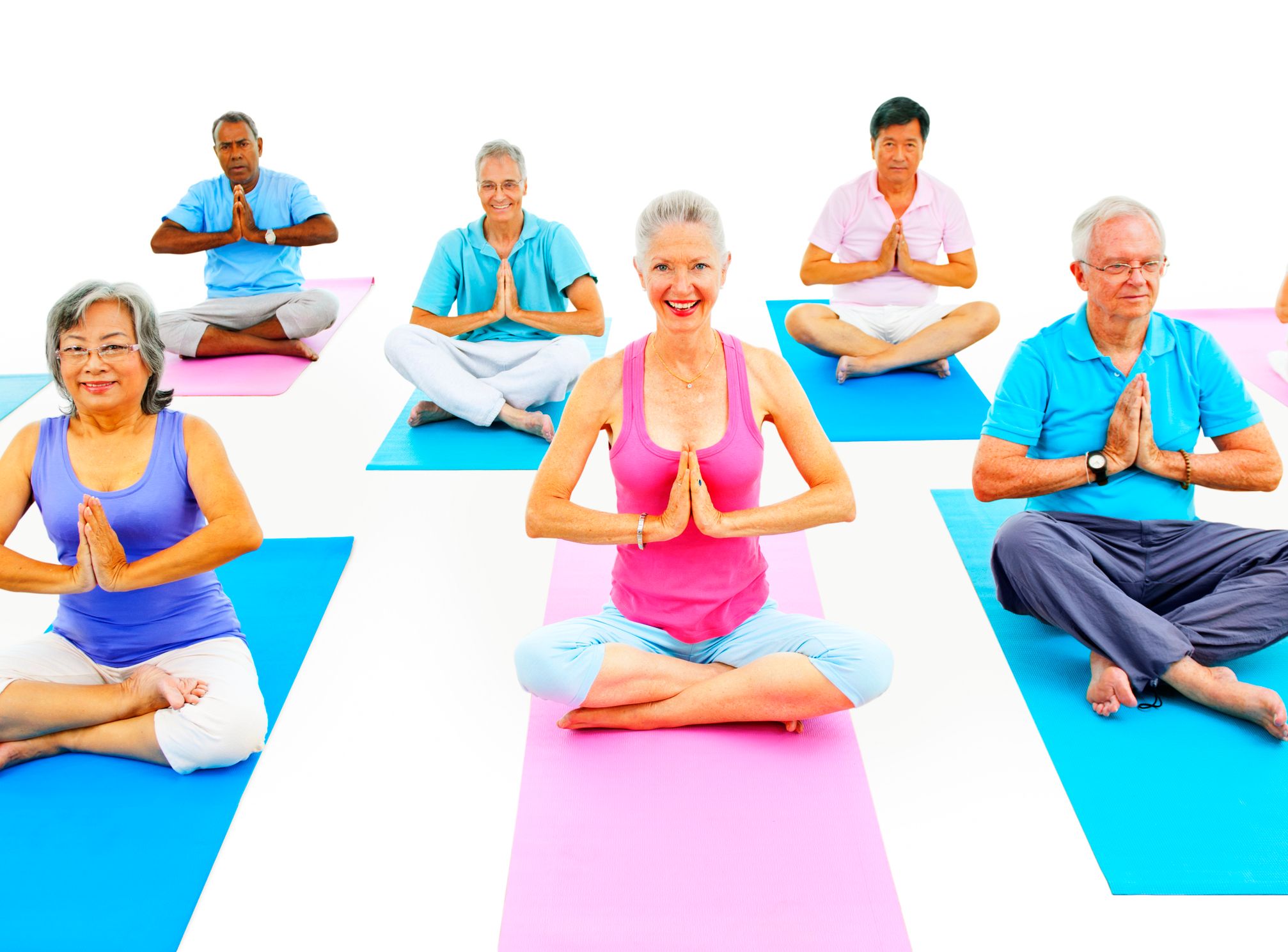Yoga for senior citizens
Combining stretching, balance and breathing, yoga is practiced at every stage of life. And thanks to exercises that are often easy to do, this activity is ideal for staying in shape after 50! The benefits on health and physical condition are quickly felt on a daily basis: improved sleep, better management of chronic pain, reduced stress, etc.
The regular practice of yoga has many advantages for seniors: life philosophy or gymnastics, what about it?
To each his own yoga!
The origin of yoga can be found in India, more than 5,000 years ago. The founding writings of yoga date back to the time of Patanjali in 200 BC. Gathered in the form of small inspiring sentences, they are called "yoga sutras" (more details in the small introduction to the history of yoga). Great masters have translated them into English and French to make them understandable to all. Over the centuries, yoga has become so popular in the West that it has been enriched with new practices, making it accessible to the greatest number of people.
Yoga today
Yoga and its traditions continue to be very much alive in India and elsewhere in the world. This discipline can be taught by true spiritual masters as well as by simple teachers. These ones advocate a psycho-corporal hygiene adapted to modern life. A set of postures and breathing exercises are taught to provide physical and mental well-being, whatever the age. Today, everyone can choose the style of yoga that suits him or her according to his or her potential and abilities. One can practice different forms of yoga:
- Dynamics: Ashtanga, Vinyasa
- Static: Iyengar, Yin
- Gentle: Hatha yoga

Yoga a discipline for all
Several types of yoga coexist, revisiting the traditional practice and adapting to the needs of each one. Highly recommended for seniors, physical activity must however be adapted for older people. Those over 60 will thus turn to Hatha yoga or Yin yoga with its gentle rhythm: a session lasts about 1 hour and 15 minutes during which a set of postures allow you to stretch slowly and gently without risk of injury.
Moreover, yoga requires little equipment except a suitable outfit and a non-slip mat on which to perform the various exercises. It can thus be practiced by everyone and everywhere easily!
The benefits of yoga for seniors
Unless medically contraindicated, yoga is a discipline accessible to all, which helps to age better. With age, the body inevitably develops signs of weakness: joints become painful, sleep is less and less restorative, chronic diseases such as osteoarthritis appear, mood disorders such as stress or anxiety become more frequent.
Practicing yoga is particularly recommended for seniors, especially since its benefits are measured on both body and mind. We will appreciate this:
- The relief of back or joint pain: the body of the elderly person unravels and finds a certain forgotten dynamic with time. Posture is also improved, as is flexibility.
- The beneficial effects of yoga on certain pathologies such as hypertension or cardiovascular diseases thanks to its destressing virtues.
- The improvement of sleep quality: with exercises based on breathing and the release of tension, insomnia gradually disappears. Postmenopausal women and senior citizens regain quality nights.
- The prevention of falls and injuries: the work of balance and muscular strengthening can prevent this type of accident very common among the elderly. The ability to get up or sit down without outside help is also improved after only a few weeks of practice.
- Stress management: the different postures relax the body and mind, thus reducing anxiety in the elderly and improving their daily mood.
Remember that before being a simple physical practice, yoga is a true philosophy of life. Its benefits are multiple. Practicing this discipline, which is in vogue today, at over 50 years of age, means cultivating both body and mind to become Zen and age better.

Yoga postures for seniors
Yoga is the ideal activity to stay in shape after 50 years! Here are some easy exercises to improve your physical condition.
These yoga postures target in priority the daily pains often encountered by seniors. The little extra? You will feel more supple, strong and free of stress!
Fifty is the ideal time to start yoga: it can be a way to surpass yourself or simply to relax, it's up to you to choose the difficulty! You'll feel more flexible and more in tune with your body - and yoga also helps to clear your mind. The benefits of this discipline are many: it reduces anxiety and stress, helps manage pain, improves sleep and helps you stay slim. And don't worry, whether you are a complete novice or an amateur, these yoga postures are specially designed to relieve the pain you encounter in your daily life.
Posture of the warrior II
Why: This yoga posture is ideal for sculpting the abdominal, thigh and buttock muscles, as well as improving posture.
How: Stand up, take a big step backwards with one leg. Point your front foot straight ahead and turn your back foot so that it forms a 45° angle with the rest of your body. Bend the front leg until your knee is perfectly aligned with your ankle, while keeping the other leg straight. Turn your chest to the side and raise your arms to form a "T", one arm in front of you and one behind. Then look straight ahead. Make sure your weight is evenly distributed on both legs and take deep breaths.
For beginners: To make this yoga posture even easier, keep your hands on your hips and hold a point in front of you.
Tree posture
Why: This yoga posture is recommended for seniors because it helps to work on balance and thus prevent falls.
How: Start standing with both legs together. Then, slide your right foot along your left leg so that your heel runs along the inside of your calf. Raise your arms above your head and join your hands. Keep your balance for a few deep breaths and then start again with the other leg.
For regulars: you can slide your foot higher along your leg, even up to the knee.
Posture of the overturned dog
Why: This position allows you to open your shoulders and chest, stretch your hamstring muscles, your back and strengthen your wrists.
How: Get down on all fours, then push on your hands to straighten your arms and on your legs to lift your buttocks up to the ceiling. Gently tuck your head in between your arms, bringing your head closer to your knees. If you can't keep your heels on the floor, that's okay - just concentrate on lifting your hips as high as possible and keep your arms and legs straight. Fix a point behind you, between your legs.
For novices: Instead of keeping your hands on the ground, you can put them on a small bench or raise them slightly.
Low slit posture
Why: To strengthen the hips and improve concentration, this is the perfect yoga posture, especially if you sit at your desk all day long!
How: Start by kneeling on a mat or towel. Place one leg in front of you, foot on the floor and knee at a right angle, aligned with your ankle. Place your hands flat on the floor for balance and move your other foot back so that your leg is straight. When you feel ready, take your hands off the floor and move into the lunge position. Raise your arms above your head and take deep breaths. Then do the same thing by reversing your legs.
For novices: If you're worried about losing your balance, you can keep your knee on the ground instead of stretching your back leg.
Sitting twist posture
Why: This yoga posture relieves back pain, improves posture and helps relieve stress.
How: Sit in a suit on your mat. Then, lift your left leg up and over your right leg so that your left foot is positioned along your right calf. Turn your chest until your right shoulder touches your left knee. With a deep breath, press your left hand into the ground while keeping your back straight and your shoulders open. Do the same on the other side.
For novices: keep your leg on the floor straight.
Bridge posture
Why: To improve digestion, which is sometimes difficult for women after the age of 50, but also to strengthen the lower back and relieve stiff hips.
How: Lie on your back with your knees bent and your feet flat on the floor, in the same alignment as your hips. Keep your arms at your sides. As you inhale, push the floor with your hands, then exhale and, squeezing your abs, tilt your pelvis so that your spine lifts off the floor. Hold the bridge posture for 30 seconds, then slowly lower, starting with your shoulders, until your back is flat on the mat again.
For novices: If you have back pain, you can roll up a towel and place it under your shoulders to make the exercise more comfortable.


